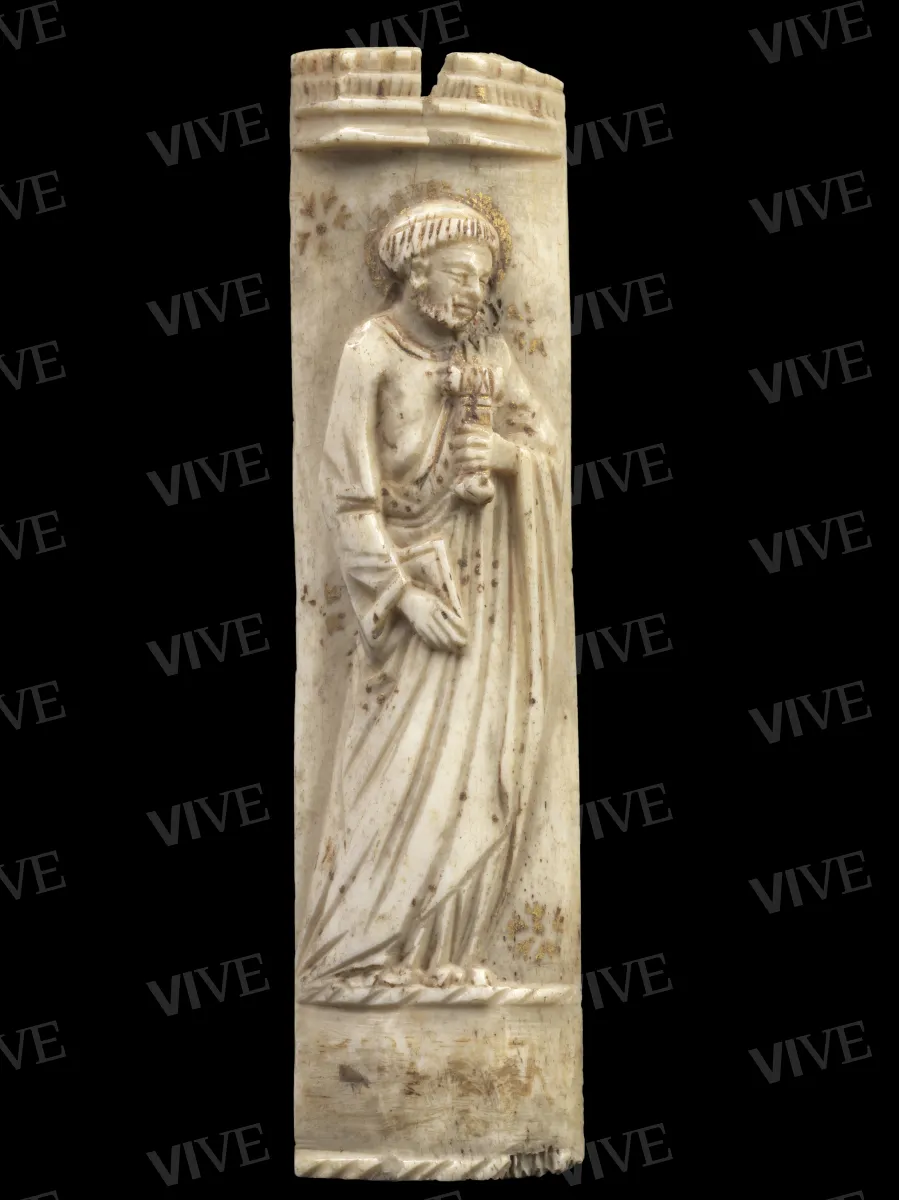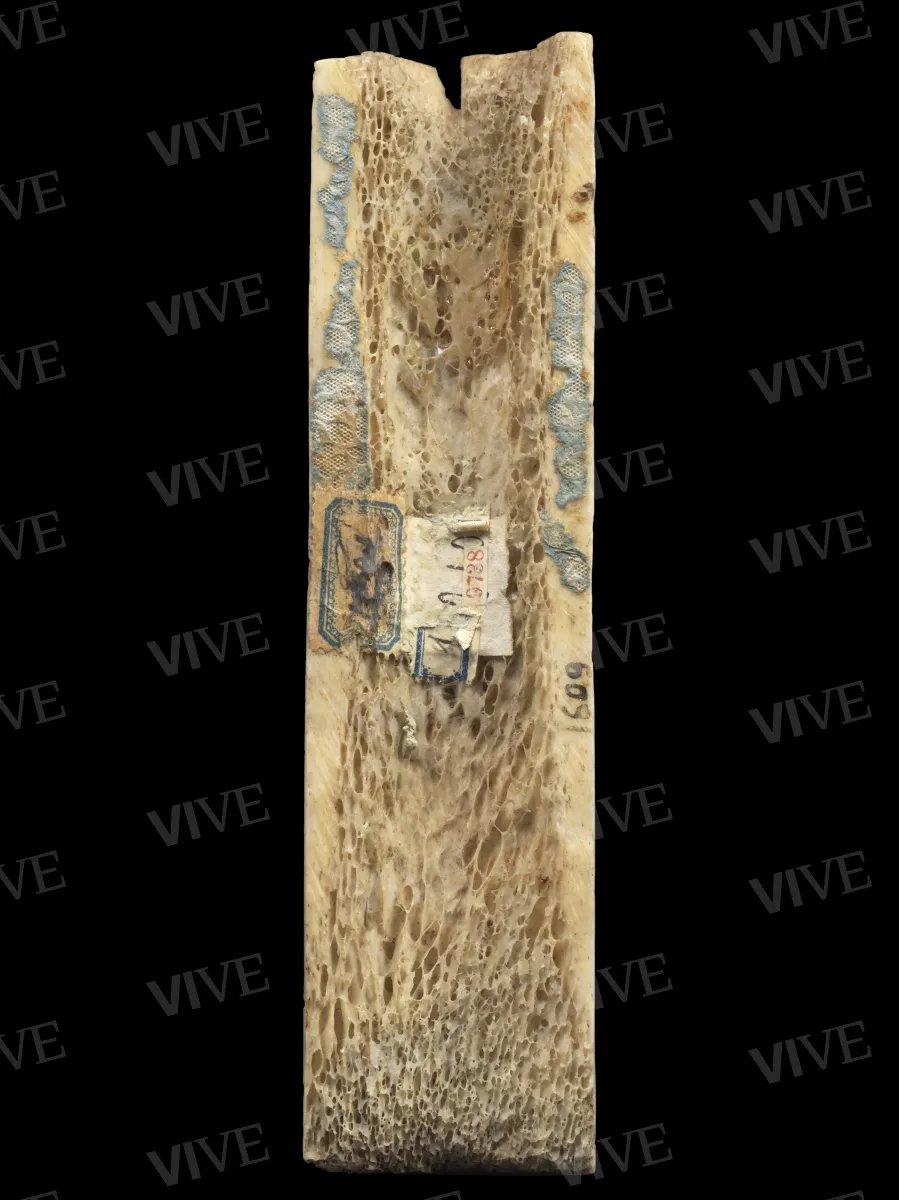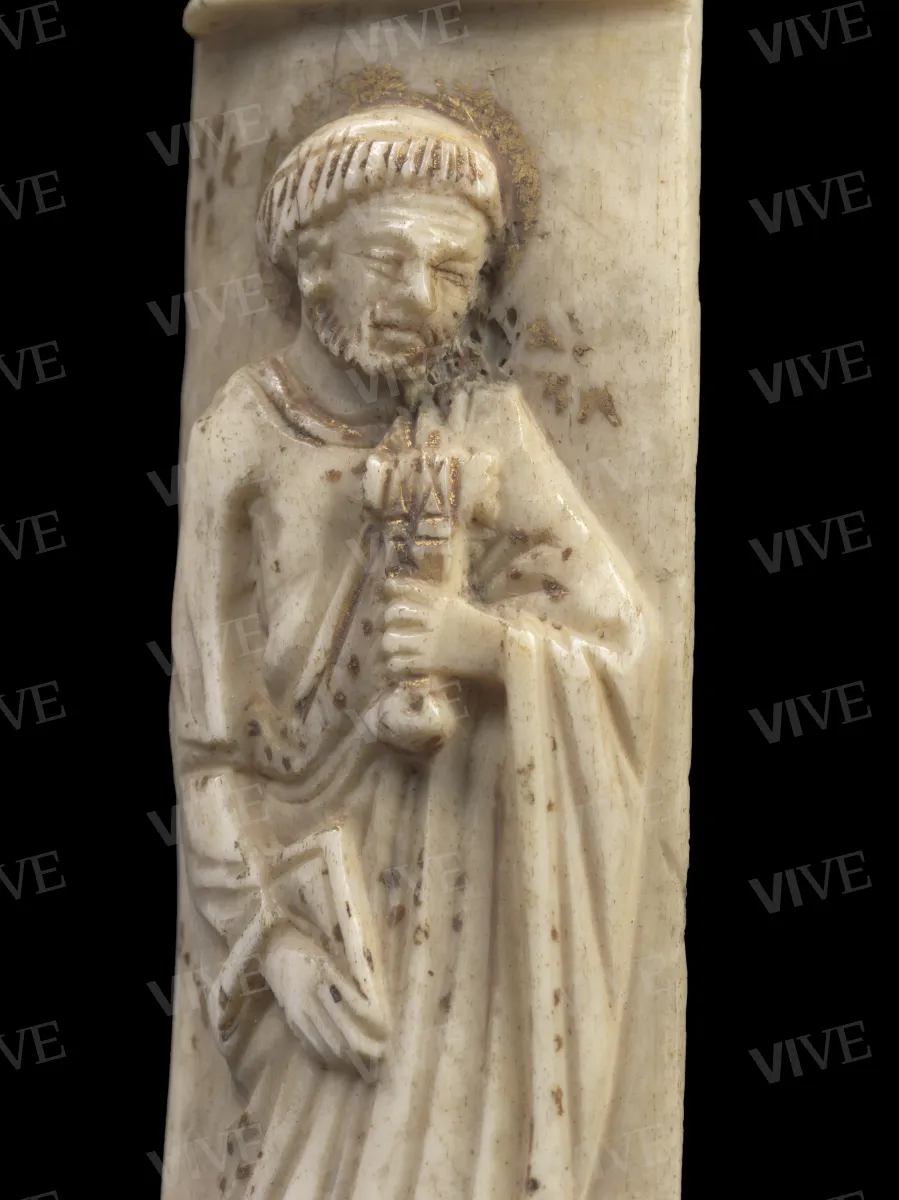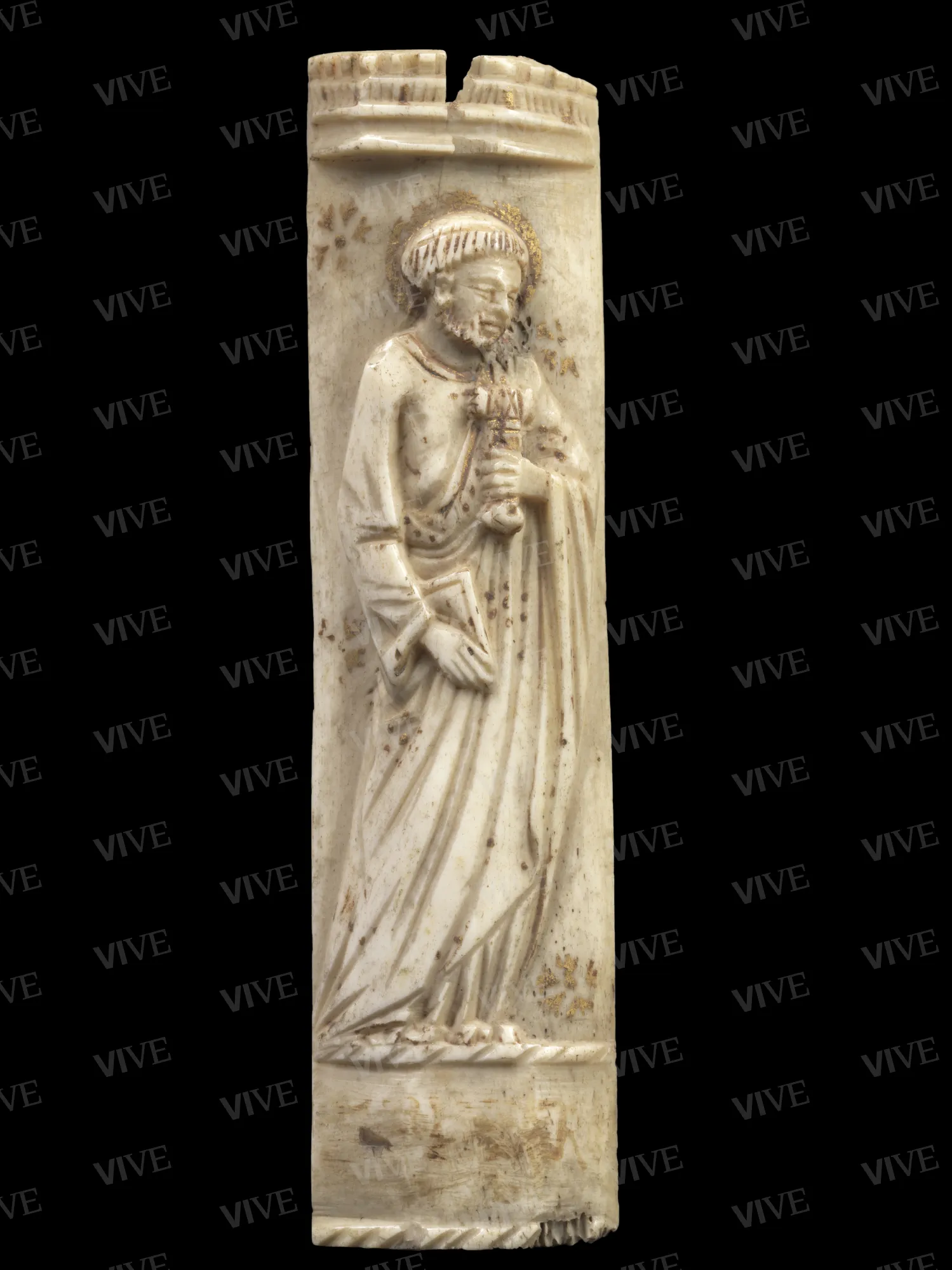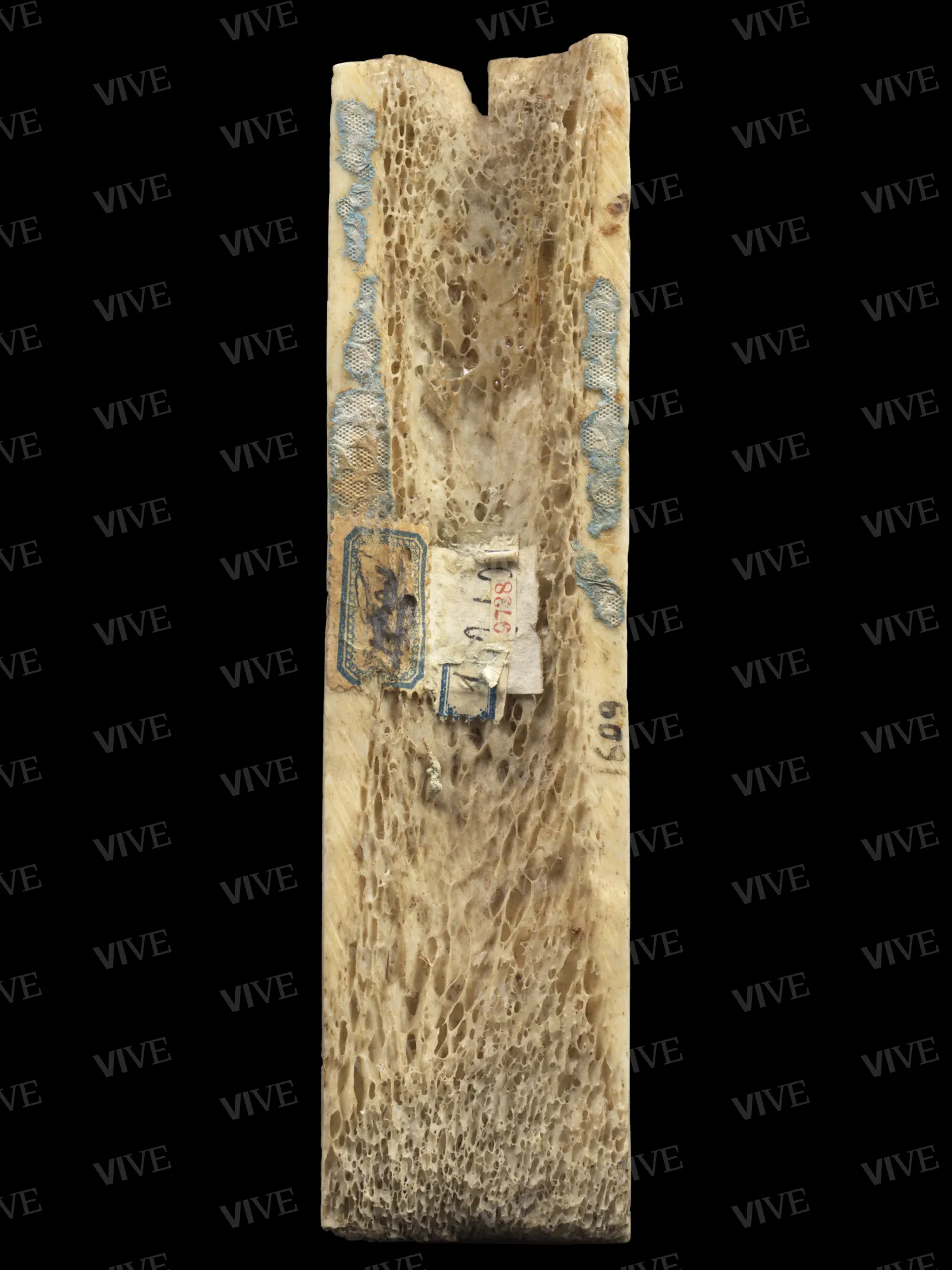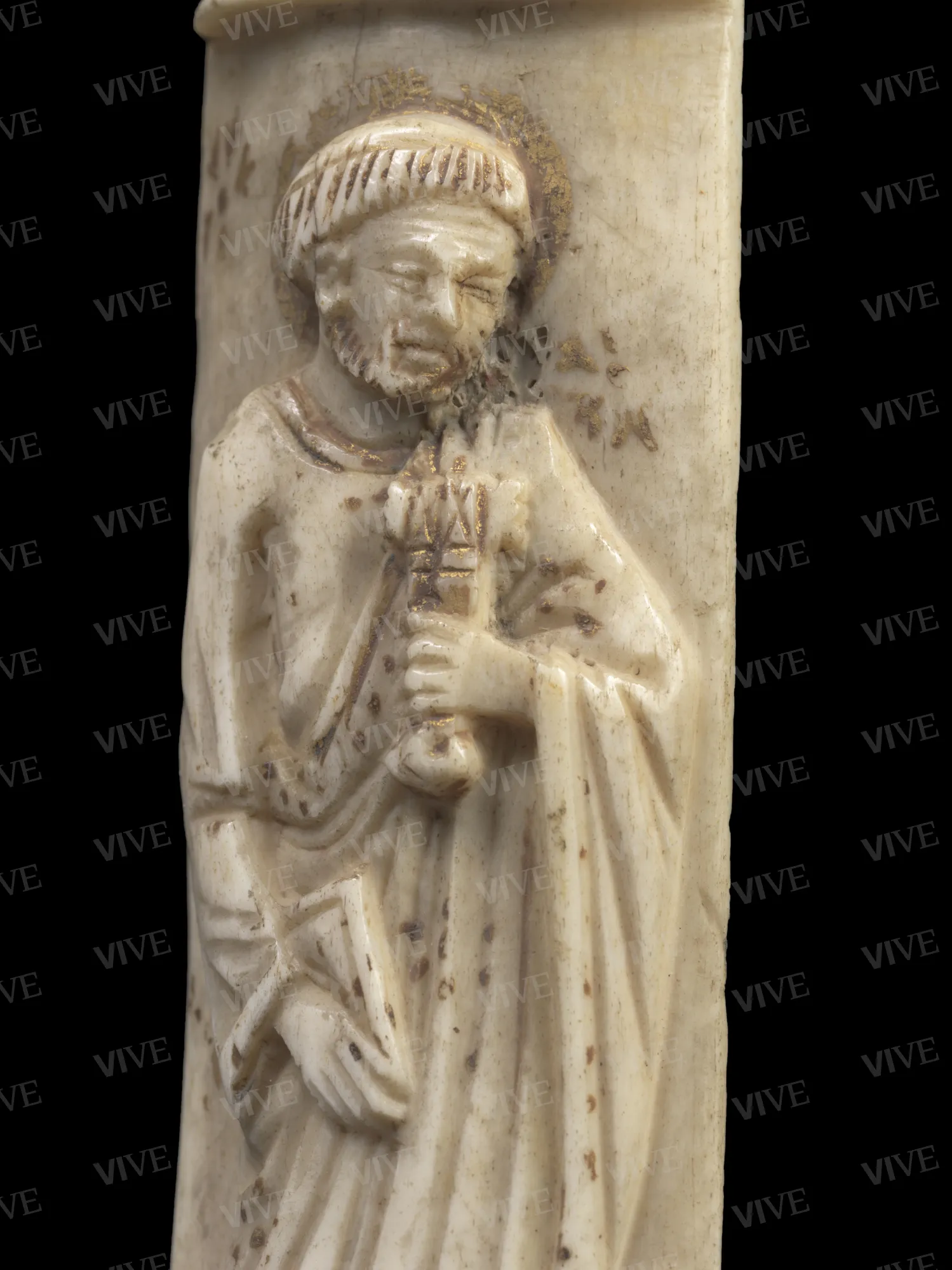Plaque originally part of a triptych: Saint Peter
Workshop of Baldassarre Ubriachi ? First quarter of 15th century
The plaque depicts Saint Peter with a book and two keys, his iconographic attributes. The saint is looking left, in a contemplative attitude. The figure rests on a base framed by two cordoned moldings, while the upper section is closed by a double-register engraved molding. Of great interest is the polychromy, where a brown pigment is used for the beard and hair, and gold for the halo and keys. An ornamental pattern of five-petaled flowers and beaded flowers can be seen in the background and robe. The inscription at the base is only fragmentary, and only the letter “r” is clearly legible.
The plaque depicts Saint Peter with a book and two keys, his iconographic attributes. The saint is looking left, in a contemplative attitude. The figure rests on a base framed by two cordoned moldings, while the upper section is closed by a double-register engraved molding. Of great interest is the polychromy, where a brown pigment is used for the beard and hair, and gold for the halo and keys. An ornamental pattern of five-petaled flowers and beaded flowers can be seen in the background and robe. The inscription at the base is only fragmentary, and only the letter “r” is clearly legible.
Details of work
Catalog entry
The uncertain availability of elephant ivory in the west during the Middle Ages prompted workers active in its manufacture to use more readily available and less expensive raw materials to meet demands during shortages. In the second half of the fourteenth century, in north-central Italy bone from animals such as oxen, horses, and pigs was regularly used to make precious artifacts. In an attempt to take full advantage of its possibilities, individual bone segments were placed side by side and fixed onto a wooden support once they were carved and polished. This procedure, which made it possible to create entire figurative cycles, became typical of the workshop founded by the Florentine merchant Baldassarre Ubriachi or Embriachi, first in Florence and then in Venice. This early phase of the workshop was distinguished by the activity of the so-called “master of bonework” Giovanni di Jacopo, who was also from Florence (Schlosser 1899; Merlini 1989; Tomasi 2016a; Chiesi 2018a). This workshop specialized in triptychs intended both for display on church altars and private devotion. The latter type of triptych has survived in several examples that, though displaying the same structure, differ in style and iconography (Merlini 1991). The iconic structure of these objects, which were smaller than the more ambitious multi-register polyptychs, included a central panel with the Virgin and Child or the Crucifixion and two side panels with figures of saints. The Saint Peter shown here must originally have been part of the left panel of an altarpiece of this type, modeled after the triptych with the Virgin and Child and Saints Peter and Paul in Palazzo Venezia (inv. PV 1584). Alternatively, this Saint Peter might instead have been placed next to the Virgin and alongside other saints in the context of a multi-register triptych similar to the triptych in the Museo Nazionale del Bargello in Florence (Chiesi 2018b). The juxtaposition between the two main apostles and the Virgin, intended as a homage to Mary as the representation of the Church itself, was very much replicated in this type of artifact (Tomasi 2016b). Just like the triptych the Saint Peter of Palazzo di Venezia comes from, other pieces for altars by the Embriachi were also painted, such as, for example, that of the convent of Santa Maria delle Grazie in Monteprandone (AP) (Montevecchi 1998). Stylistically, the figure of Saint Peter is characterized by a slight thrust of the hips, long, parallel folds in the fabric of the mantle, an outlined form of the hair, and thin, elongated eyes. All these features are also present in a plaque depicting Saint Paul from the Capodimonte Museum in Naples (Giusti 1981). The Capodimonte fragment is slightly shorter than the one from Palazzo Venezia because it has been cropped both above and below; the width, however, is the same as the Palazzo Venezia fragment, with which it also shares an identical corded molding of the base and the contents of the upper portion of the plaque. The Capodimonte Saint Paul, moreover, is facing right, as opposed to Saint Peter, who is looking left. These peculiarities might suggest they were originally set alongside a Virgin and Child or a Crucifixion in the context of a triptych that, for all the features exhibited, might well belong to the late production of an Ubriachi or Embriachi workshop at some point within the first quarter of the fifteenth century.
Giampaolo Distefano
Entry published on 12 February 2025
State of conservation
Good. Split in the upper portion of the plaque.
Inscriptions
Fragmentary ink inscription along the support band, where only the letter “r” is clearly visible.
References
von Schlosser Julius, Die Werkstatt der Embriachi in Venedig, in «Jahrbuch der Kunsthistorischen Sammlungen des Allerhöchsten Kaiserhauses», 20, 1899, pp. 220-282;
Bernardini Giorgio, Il nuovo Museo di Palazzo Venezia. Arte Bizantina - Oggetti in osso e in avorio, in «Rassegna d’arte», XVII, 1917, pp. 25-44 (p. 41);
Giusti Paola, in Giusti Paola, Leone de Castris Pierluigi (a cura di), Medioevo e produzione artistica di serie: smalti di Limoges e avori gotici in Campania, catalogo della mostra (Napoli, Museo Duca di Martina, ottobre 1981-aprile 1982), Firenze 1981, p. 138, n. II, 24;
Merlini Elena, I trittici portatili della “Bottega degli Embriachi”, in «Jahrbuch der Berliner Museen», 33, 1991, pp. 47-62;
Montevecchi Benedetta, in Dal Poggetto Paolo (a cura di), Fioritura tardogotica nelle Marche, catalogo della mostra (Urbino, Palazzo Ducale, 25 luglio-25 ottobre 1998), Milano 1998, p. 85, n. 12;
Tomasi Michele, La bottega degli Embriachi e gli oggetti in legno e osso in Italia fra Tre e Quattrocento, in Castronovo Simonetta, Crivello Fabrizio, Tomasi Michele (a cura di), Avori medievali. Collezioni del Museo Civico d’Arte Antica di Torino, Savigliano 2016, pp. 151-153 (Tomasi 2016a);
Tomasi, in Bacchi Andrea, De Marchi Andrea (a cura di), La Galleria di Palazzo Cini. Dipinti, sculture, oggetti d’arte, Venezia 2016, n. 68, pp. 274-275 (Tomasi 2016b);
Chiesi Benedetta, Gli Embriachi e le botteghe dell’Italia settentrionale fra Tre e Quattrocento, in Ciseri Ilaria (a cura di), Gli avori del Museo Nazionale del Bargello, Milano 2018, pp. 334-335 (Chiesi 2018 a);
Chiesi Benedetta, in Ciseri Ilaria (a cura di), Gli avori del Museo Nazionale del Bargello, Milano 2018, pp. 339-343, n. IX.4 (Chiesi 2018b).

